
Intraperitoneal vs. Retroperitoneal Organs YouTube
spillage of hemorrhage into the peritoneal cavity can be picked up; a large hematoma in the retroperitoneum may be seen; may show indirect evidence of displacement of retroperitoneal structures; the presence of an abdominal aortic aneurysm with peri-aortic hemorrhage could favor a ruptured aortic aneurysm as the cause; CT.
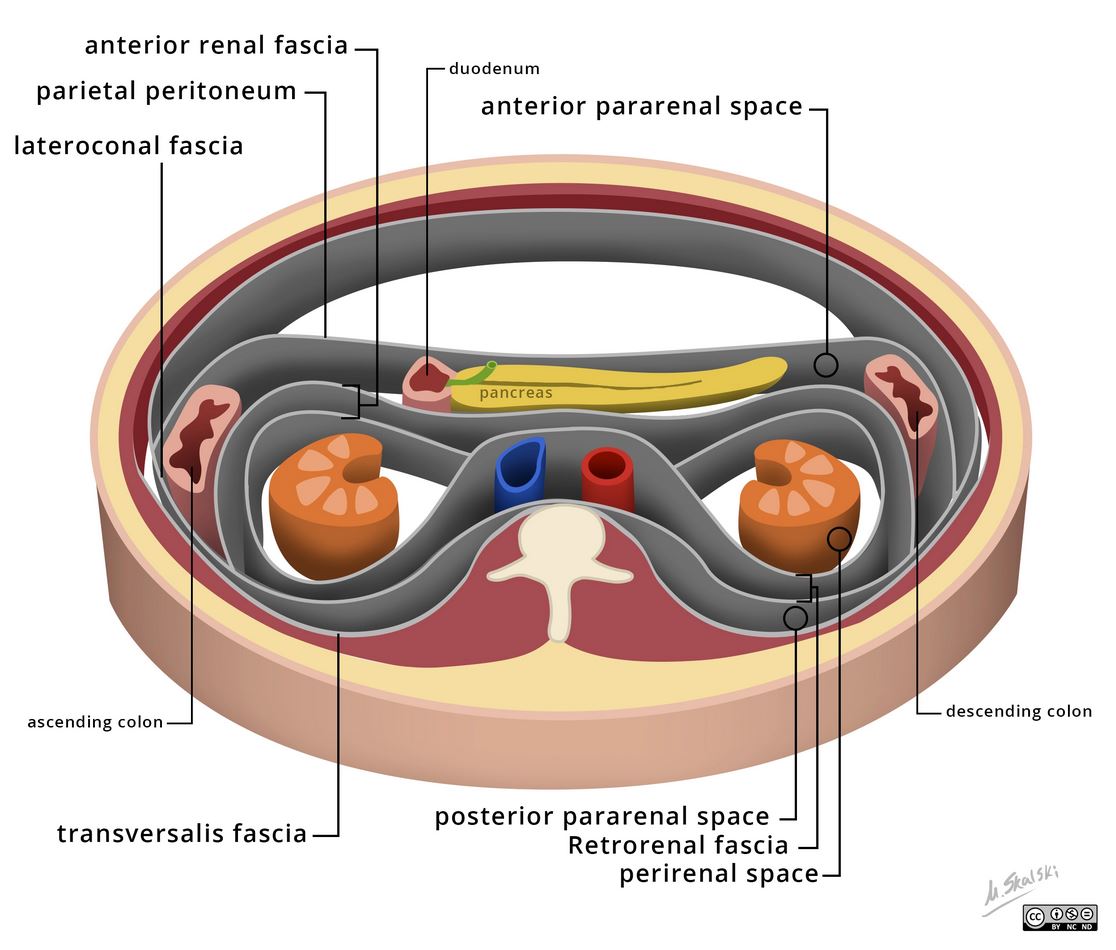
retroperitoneumillustration1 NephroPOCUS
The retroperitoneum is an anatomical space located behind the abdominal or peritoneal cavity. Abdominal organs that are not suspended by the mesentery and lie between the abdominal wall and parietal peritoneum are said to lie within the retroperitoneum. Several individual spaces make up the retroperitoneum. These spaces are the anterior pararenal space, posterior pararenal space, and the.

Peritoneal and Retroperitoneal Anatomy and Its Relevance for CrossSectional Imaging RadioGraphics
The clinical manifestations of retroperitoneal masses are nonspecific, depending on their location and relation with the adjacent structures ().The main imaging methods for the evaluation of these lesions are computed tomography (CT) and magnetic resonance imaging (MRI), imaging features facilitating the differential diagnosis, the tumor staging, and the definition of the surgical strategy, as.

Intraperitoneal VS Retroperitoneal organs YouTube
The peritoneum consists of two layers: Parietal peritoneum - an outer layer which adheres to the anterior and posterior abdominal walls.; Visceral peritoneum - an inner layer which lines the abdominal organs. It's made when parietal peritoneum reflects from the abdominal wall to the viscera.; Although in adults the peritoneum looks like it's scattered all over the place, there is a.
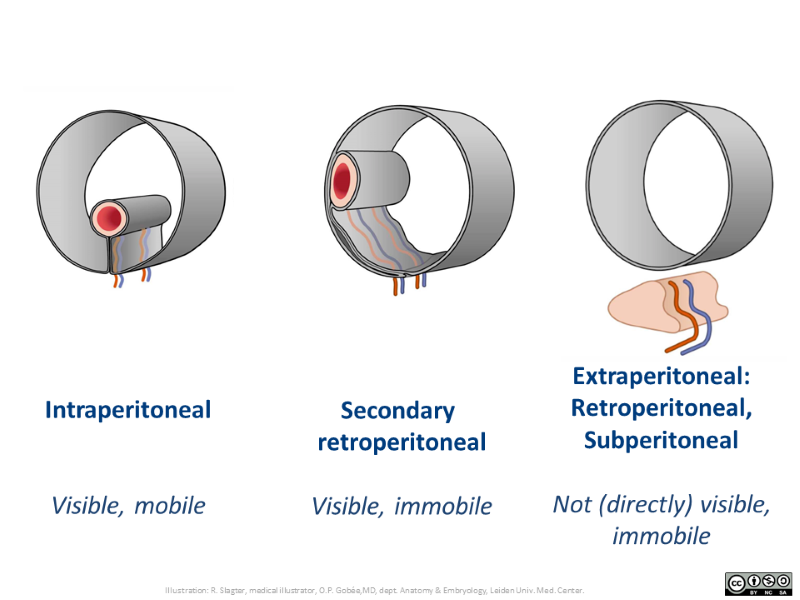
Retroperitoneal Organs List
The deepest portion of the peritoneal cavity is the pouch of Douglas in women and the retrovesical space in men, both in the upright and supine position. The mesentery is a double fold of the peritoneum. True mesenteries all connect to the posterior peritoneal wall. These are: The small bowel mesentery; The transverse mesocolon

Peritoneal and Retroperitoneal Anatomy and Its Relevance for CrossSectional Imaging RadioGraphics
This video discusses intraperitoneal vs. retroperitoneal organs, and ends with a discussion on visceral vs. parietal peritoneum.This individual GI lecture vi.
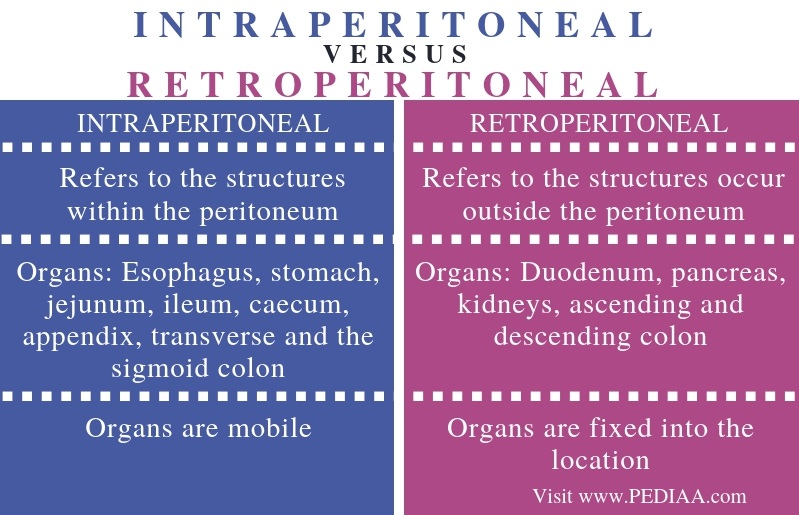
What is the Difference Between Intraperitoneal and Retroperitoneal
The structures in the abdomen can lie in one of three locations in relation to the peritoneum: intraperitoneal, secondary retroperitoneal or (primary) retroperitoneal. This page explains the development, adult configuration and characteristics of the extraperitoneal location, that includes the retroperitoneal location.

Intra and Retroperitoneal organs Organs, Arteries, Stomach
The structures bound by the peritoneal cavity may be intraperitoneal or retroperitoneal. The peritoneum is the serous membrane that lines the abdominal cavity. It is composed of mesothelial cells that are supported by a thin layer of fibrous tissue and is embryologically derived from the mesoderm. The peritoneum serves to support the organs of.
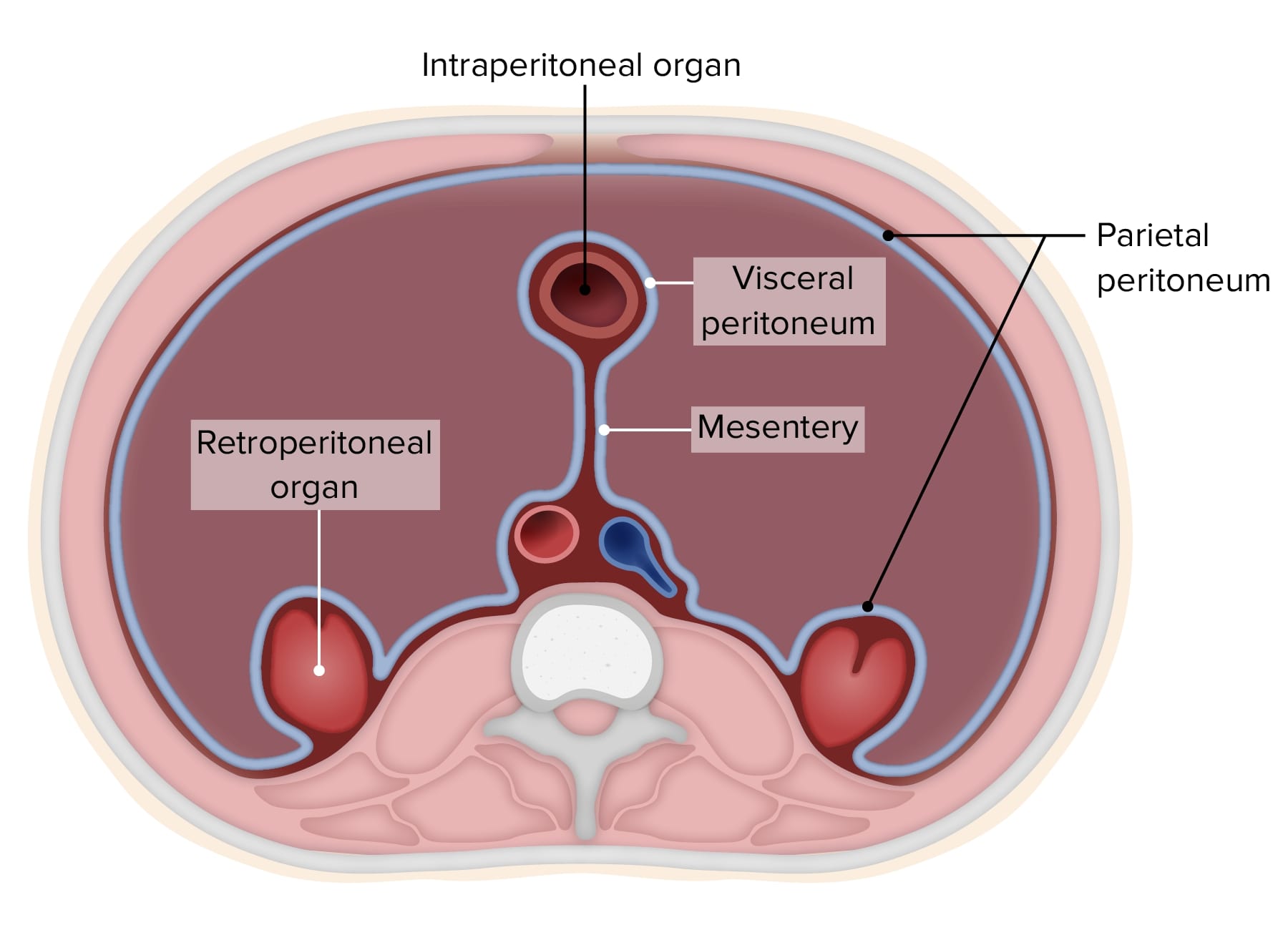
Retroperitoneal Organs
Key Terms. greater omentum: A large fold of visceral peritoneum that hangs down from the stomach.; retroperitoneal: Located outside of the peritoneum.; serous membrane: A thin membrane that secretes serum that lines an internal body cavity, such as the peritoneum, the pericardium, and the pleura.; peritoneum: In mammals, the serous membrane that lines the cavity of the abdomen and that is.

Difference Between Intraperitoneal and Retroperitoneal Compare the Difference Between Similar
The retroperitoneum is the part of the abdominal cavity that lies between the posterior parietal peritoneum anteriorly and the posterior abdominal wall 4.. It is C-shaped on axial cross-section with convexity projecting anteriorly in the mid-line. Gross anatomy. The retroperitoneum is variably defined, mostly by the lack of consensus definition for the posterior abdominal and whether the psoas.

Abdominal Wall, Peritoneum and Intestines LO7 Intra/Retro/Sub Peritoneal YouTube
It is difficult to identify normal peritoneal folds and ligaments at imaging. However, infectious, inflammatory, neoplastic, and traumatic processes frequently involve the peritoneal cavity and its reflections; thus, it is important to identify the affected peritoneal ligaments and spaces. Knowledge of these structures is important for accurate reporting and helps elucidate the sites of.

Figure 3 from MDCT signs differentiating retroperitoneal and intraperitoneal lesions diagnostic
The peritoneal cavity is the space between the parietal peritoneum and the visceral peritoneum, which covers all the intraperitoneal organs (i.e., the stomach, spleen, gallbladder, liver, and part of the intestines). Approximately 50 mL of fluid is produced daily and circulates throughout the peritoneal cavity in a well defined pattern.
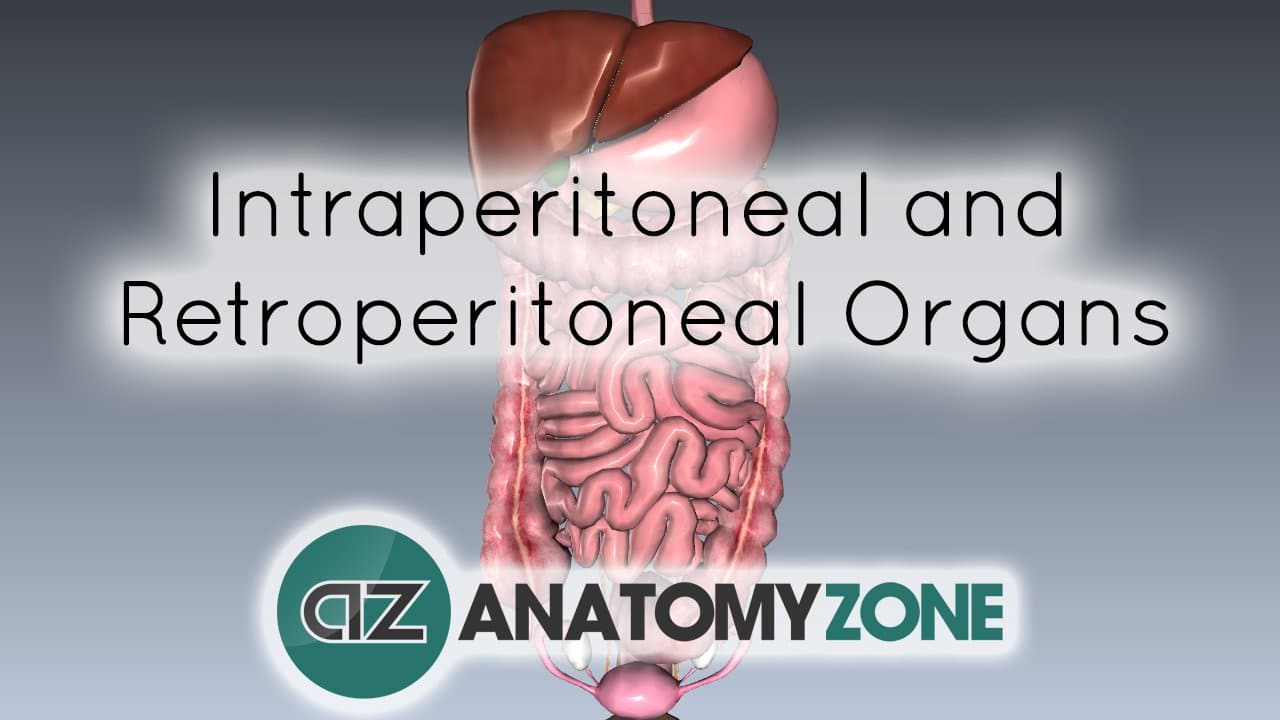
Intraperitoneal and Retroperitoneal Organs 3D Models, Video Tutorials & Notes AnatomyZone
A useful mnemonic to remember which organs are retroperitoneal is: SAD PUCKER Mnemonic S: suprarenal (adrenal) gland A: aorta/IVC D: duodenum (second, third and fourth parts) P: pancreas (except tail) U: ureters C: colon (ascending and de.

Difference Between Intraperitoneal and Retroperitoneal Compare the Difference Between Similar
The secondary retroperitoneal organs, which were initially intraperitoneal and became retroperitoneal structures during embryologic development due to the regression of peritoneal tissue lying on the posterior wall of the abdominal cavity (the mesentery of these structures fuse with the posterior abdominal wall), are the ascending and.
:background_color(FFFFFF):format(jpeg)/images/library/12399/peritoneal_organs.png)
Greater and lesser omentum Location, anatomy, function Kenhub
Retroperitoneal lymph nodes are located in the abdomen. They may become enlarged because of primary or secondary causes. Primary causes include things like infections or cancers that develop in the lymph nodes. Secondary causes include conditions affecting nearby organs like the kidneys or pancreas.

Retroperitoneal Vs Intraperitoneal
The structures in the abdomen can lie in one of three locations in relation to the peritoneum: intraperitoneal, secondary retroperitoneal or (primary) retroperitoneal. More generically, the third location should be named extraperitoneal, meaning 'outside the peritoneal cavity'.This includes, for instance, locations posterior to the peritoneal cavity, inferior to the peritoneal cavity, etc.